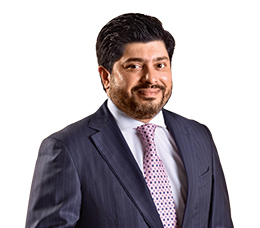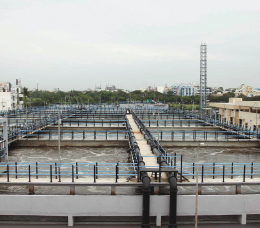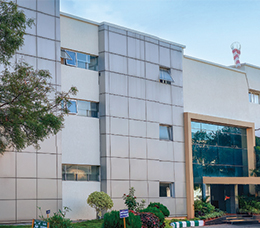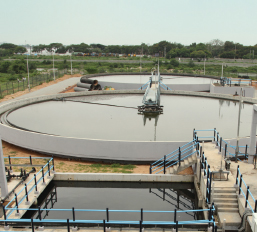WATER TREATMENT SOLUTIONS
INDIAN WATER INDUSTRY
The Government of India’s spending on water infrastructure is increasing year-on-year under various schemes, including specialised water and wastewater projects such as Namami Gange. The State Governments are also increasing their investments in setting up more water and wastewater treatment plants, refurbishing old and broken water supply lines, and setting up water supply projects to cater to the growing demand from urban customers. The Water business in general is largely split between municipal, industrial, commercial, agriculture and household sectors.
The municipal sector remains the most active segment, wherein substantial funds are being committed and invested across the country to increase water supply through various means. Industrial wastewater treatment scenario in India has become very dynamic in the wake of the stringent environment norms prescribed by the Central Pollution Control Board and monitored by the National Green Tribunal (NGT). In view of the fast depleting groundwater table, industrial wastewater treatment has become a viable alternate to meet the large industrial demand, and many regions in the country are mandating to do so.
During FY 20, on account of general election and elections to major state assemblies, the overall order finalisation in the country witnessed slowdown.
According to the World Bank, the current industrial water use is about 13% of the total freshwater in India, and it will grow at a rate of 4.2% per year, rising to 228 billion cubic metres by 2025.
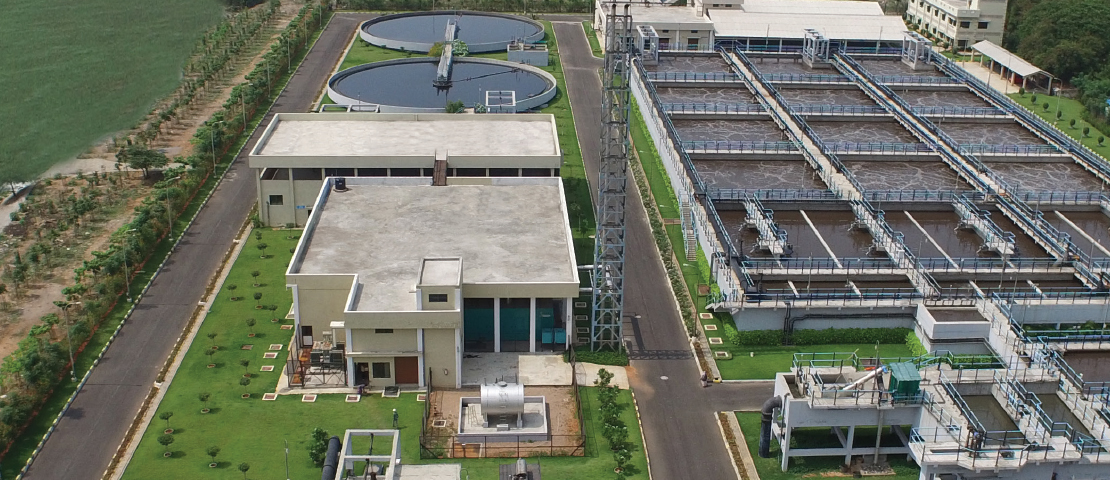
With water expected to become more valuable than oil as rising demand from people, industries and agriculture puts pressure on supplies, India could soon be staring at a water crisis, as pointed out by various reports by multi-lateral agencies.
The potential of water recycling to meet non-potable needs - for gardening, toilet and laundry, which accounts for at least 60% of domestic water use - is huge. In fact, many cities across the world, such as Brisbane, Singapore, Windhoek (Namibia) and California’s Orange County - are recycling wastewater for drinking. While the use of sewage for potable purposes is still to pick up in a big way globally, its use for non-potable purpose worldwide is far more common.
The water sector is seen as becoming a huge opportunity on both new projects as well as Retrofitting and Operations & Maintenance (O&M) of existing capacities. The water and wastewater treatment market size is expected to grow at a CAGR of 5.8%, with growing urbanisation a key factor driving the market.
- In view of the growing demand for Water, water recycling is slated to become inevitable across all metros and large cities in India. Over-dependence on the monsoon has been a major challenge for India to meet its water needs. Only 60% of the country receives irrigated water, while the rest of the land is dependent on monsoon rains.
- According to the World Bank, the current industrial water use is about 13% of the total freshwater in India, and it will grow at a rate of 4.2% per year, rising to 228 billion cubic metres by 2025.
- The per capita availability of groundwater has significantly come down, and is likely to decline further with the growing population and demand. As per the Ministry of Water Resources, per capita water availability in 2025 and 2050 is estimated to come down by almost 36% and 60% respectively.
- It is believed that in order to address the ever increasing demand for water, India needs to adopt and implement innovative solutions for more efficient water management and wastewater recycling and reuse.
As per estimates, only around 30% of the wastewater generated in India’s major metropolitan cities is treated, and the cities now face severe water shortages. The River Yamuna’s 22-km stretch in Delhi is barely 2% of the length of the river, but contributes over 70% of the pollution load. Water scarcity and strict regulation has led many industries to adopt cluster-based water-recycling systems, especially Food, Textiles, Pharmaceutical, Chemical and Power industries. Zero Liquid Discharge systems and wastewater recycling are becoming increasingly popular in India. The Company has used this technology in projects like Balotra.
The municipal wastewater discharge has become an issue of critical concern for environmental and public health concern, with necessary interventions involving introduction of high technology and innovative waste water treatment technologies to address the problem, since the existing systems are inefficient, incomplete and expensive. It is, therefore, important to adopt an integrated approach encompassing multiple elements, such as a) minimisation and prevention, b) treatment for reuse, and c) natural self-purification.
Due to stringent revision of discharge standards for Sewage Treatment Plants (STP) in metropolitan and other areas by NGT, all older STPs have become non-compliant, and there is need for retrofitting and refurbishment of these plants. Going forward, there will be enormous opportunities in this segment across the country.
The Central Government’s focus on Namami Gange for cleaning of Ganga, JICA-funded projects in Delhi and Karnataka, Atal Mission for Rejuvenation and Urban Transformation (AMRUT) programmes for Pollution abatement, Recycling and Re-use, Stricter Vigil by NGT will all be the key demand drivers. Due to COVID-19 disruption, it is estimated that new order finalisation in FY 21 may be subdued due to possibility of lack of funding.
AMRUT and ‘Smart Cities’ Mission is expected to create significant business opportunities for the development of basic infrastructure services in water supply and sanitation, drainage, solid waste management and sewage treatment.
“Namami Gange” programme of ₹20,000 crore will create Hybrid Annuity Model (HAM) based projects, with focus on arresting the municipal and industrial waste / pollution flowing into the rivers, along with creation of 2,500 MLD municipal sewage treatment capacity. This programme will also implement Zero Liquid Discharge (ZLD), with all industries required to instal real-time online effluent monitoring stations.
As water availability and quality declines and pressure mounts on industries to build Common Effluent Treatment Plants (CETP) and re-use water, the Triveni Water business will be focussing on CETPs, recycling and re-use projects with latest technologies.
2020 Triveni Engineering, All Rights Reserved
Design & Developed by RDX Digital Pvt. Ltd.

